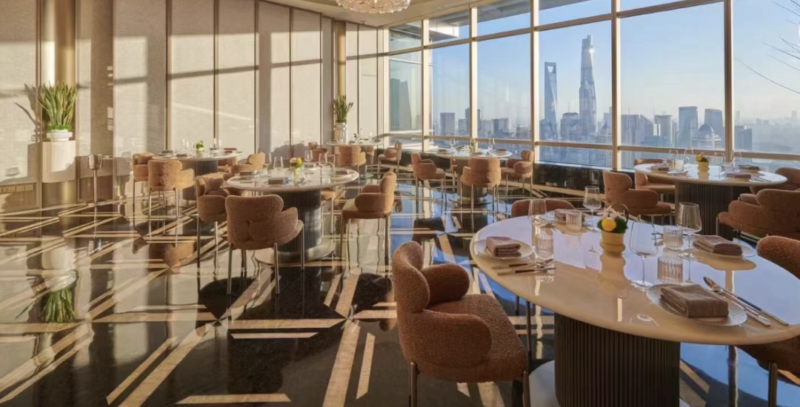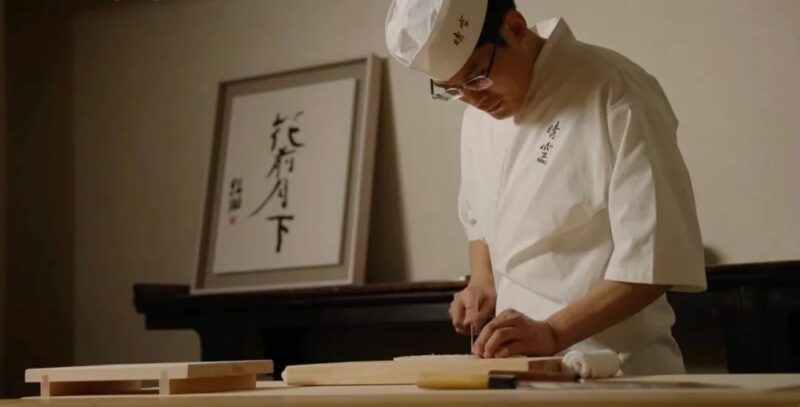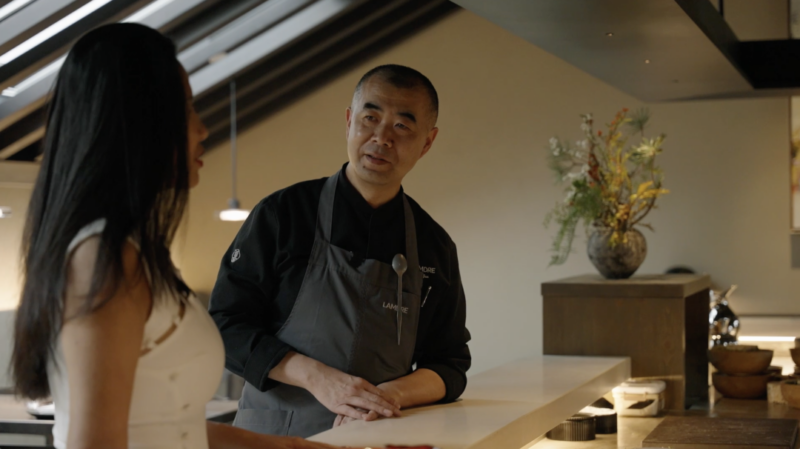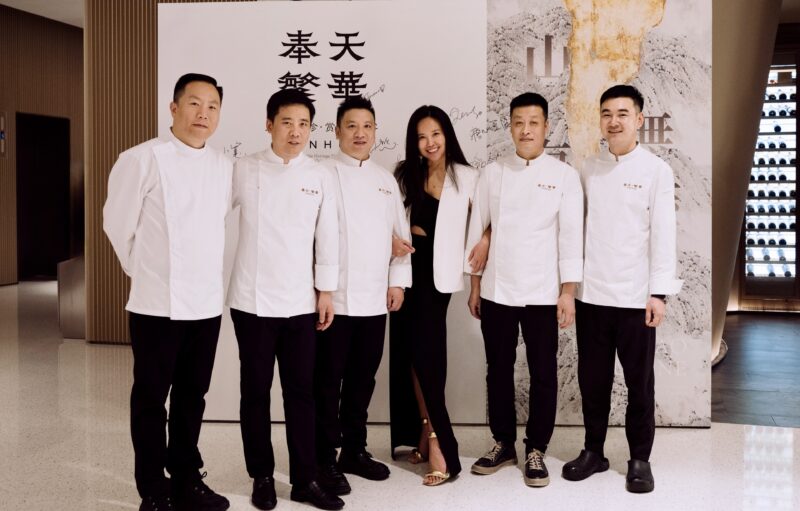Photo:DiDi Meng
Short food documentary about chef Wang Yong of Jin Sha Restaurant, duration: 3m47s
Surrounded by trees, the Four Seasons Hotel Hangzhou sits along the banks of the New West Lake feeling like a vast and exquisite private Chinese garden filled with ancient romance and modern elegance. The highlight of the Four Seasons Hotel is the Jin Sha restaurant led by Executive Chef Wang Yong (王勇). In October of 2020, the hotel marked the ten-year anniversary of its opening, with the Four Seasons Hotel Hangzhou at West Lake being the only hotel in the hotel group having restaurant revenues exceeding room revenues.

Wang Yong, Executive Chinese Chef of Four Seasons Hotel Hangzhou at West Lake
Classic Dishes of Jin Sha Restuarant
I stayed at the Four Seasons hotel for three days to film Chef Wang Yong’s cooking demonstration. Recalling all the dishes we tasted during our stay, I still remember as if it was just yesterday. The endless aftertaste of each dish such as the bean curd with caviar from Qiandao Lake in Zhejiang, and Chinese ingredients such as broth with scallops. The taste was well-balanced and had its own unique characteristics.

The bean curd with caviar @ Jin Sha Restaurant
Another dish I recall was boiled sea whelks in rice wine, mixed with dozens of Chinese spices. What I found most thoughtful was that in order to avoid any remaining sand or grit in the shells, the kitchen staff would remove the whelk meat one by one, clean it out, and then put it back in the shell. There was also a noodles dish representative of Hangzhou which was made from bamboo shoots and boiled Chinese cabbage. The soup was sweet and fragrant, with Wang Yong’s take on these dishes proving well refined and extremely delicious.

Boiled sea whelks in rice wine
Even now I still remember several of Jin Sha’s signature dishes such as crispy chicken, crab roe fried rice, duck liver paste with green onion pancake and wok-fried spring chives with minced pork, vermicelli and clams which used salty and fragrant chives stir-fried and filled with deep-fried crispy sesame balls. It is interesting to note that these dish combinations all came about one day whilst Chef Wang Yong was having his breakfast. The wonderful combination of sweet and salty gives his dishes a multitude of flavors that work in perfect harmony. One of the desserts that impressed me the most was his creme brulee with Longjing tea, which had an excellent balance of aroma between the two.

Crispy chicken

Creme brulee with Longjing tea
The menu at the Jin Sha restaurant features more than two hundred dishes, and during our stay there we sampled more than forty dishes, with almost all of the dishes winning over my heart. It was around the fourth meal that it hit home, that his Chinese food is truly unique. Norman – our director for this video documentary – told to me that there are only a few restaurants in the world where you can eat for three days and three nights without getting tired of the food and where each meal is still filled with anticipation. I thought about what he said and silently recalled the restaurants I had visited in the last ten years and it was indeed true, there were less than five restaurants that I could count to meet these criteria.
How To Define Jiangzhe Cuisine?
Hangzhou is an ancient and rich city with profound food culture. He said that Jiangsu and Zhejiang cuisine were not originally in China’s eight major regional cuisines – its base is Huaiyang cuisine – but Wang Yong’s talent allows him to innovate using traditional techniques and turn old into modern, whilst using different high-quality ingredients from around the world. His success in blending traditional Jiangsu and Zhejiang cuisine has become such that many of his dishes are regularly imitated by others. Examples include his signature dish – braised pork with abalone, spring leek, and Shanghai fried rice balls, and braised meatball with soy sauce, etc… With so many dishes being copied, I asked Wang Yong what his thoughts on this were. He simply smiled and said, “It is normal.”

Braised pork with abalone

Pork neck with shrimp paste paired with east sea yellow croaker
On this occasion, I was able to taste Wang Yong’s original pork neck with shrimp paste paired with east sea yellow croaker. He said that when he was in Taizhou, he thought their shrimp paste was extremely delicious. He mentioned that steaming a big yellow croaker may not bring out enough grease and also take longer to cook. Therefore he puts slices of pork neck on top of the fish to create a perfect combination between aroma and grease.
Totally different from the integration of many Chinese elements into modern French cuisine, he is able to integrate all the ones tasted in various countries into that of Chinese cuisine. Both the slicing skill and the combination of ingredients are perfectly harmonious, and makes you want more even after you have finished.
When you enter a good restaurant you will understand the balance of everything being “just right.” The food service matches the restaurants elegance, environment is comfortable and nothing seems forceful or that they are trying too hard, good consistency with reasonable price. It is this mixture of food, environment, and staff that makes the Jin Sha restaurant a truly special Chinese restaurant.
Chef Wang Wong’s Culinary Journey
Many people may think that Wang Yong must have an extraordinary background, but actually not. He did not have the opportunity to travel abroad for experience or go to Europe to work with starred chefs like many others. His achievements today are based entirely on learning from the world from China. A way in which is totally unique to others.
Wang Yong’s starting point began in Shanghai nearly thirty years ago. He was first influenced by Cantonese cuisine and later worked in the “HuangPu Club” on the Bund No. 3 for four years. It was these experiences that allowed Wang Yong to develop different understanding of Chinese cuisine and its creation.
Ten years ago when well-renowned Shanghai Chef Tony Lu (卢怿明)served as an advisor to the Four Seasons Hotel Hangzhou, he introduced Wang Yong to the Jin Sha restaurant as its opening chef and in October it has just been over ten years. Wang Yong said that he owed everything to Tony Lu. His introduction to Jin Sha has not only provided a platform to allow him to develop, but has also allowed him to be a mentor and a friend, with Tony sharing different insights and views.
For example, the first time I had his signature braised pork and abalone, the meat was cooked perfectly, there was no excess fat, had a fresh and tender taste and was truly first-class. Perhaps it was the use of high-end ingredients that meets the needs of the Chinese high-end diet before adding the abalone that made the difference because I don’t particularly like fresh abalone as I much prefer dry abalone.
During my visit to the Jin Sha, I feel that Chinese cuisine has made a great leap forward in the past ten years. Chinese chefs are no longer stubborn men who stick with only traditional dishes, use only expensive ingredients such as fish maw and sea cucumber in order to push up prices. In addition many chefs nowadays are willing to break away from the tradition of using too much oil and salt in their dishes and are more willing to start embracing innovation.
Wang Yong is definitely a pioneer. He has the ability to reinterpret street food and turn it into fine dining. He is able to find a great balance between use of general and high-end ingredients, also able to find inspiration from Western cuisine and apply it to Chinese cuisine, deconstruct and apply it to his own Chinese dishes.
Compared to Western fine dining cuisine, a tasting menu provides a platform for the chef to show off their creativity and ability. Jin Sha restaurant produces up to 200 dishes at a time, with each dish maintaining to fine dining standards. It is quite spectacular to think about the painstaking manpower required to achieve this standard of level. Jin Sha is a fairly large restaurant and has both a large Bistro and fine dining menu. With Chinese cuisine, the majority of food is good with large gas cookers, used to generate the necessary heat required, making the kitchen hotter and in my opinion more challenging to work in than that of Western kitchens.
Wang Yong has got me thinking about the requirements that form a good chef. Personally, I think that the reputation of a chef is not just how innovative his or her work is, but whether he or she has the ability to get customers to return.
In an interview with him, he talked about signing up for a cooking class whilst working in Shanghai. Every day he would ride a bicycle from his place of work and ride for an hour and a half to the school. At that time, he was the youngest in the class and had a lot of hardships which got him thinking about his life goals. Having given this much thought, he motivated himself to succeed and graduated within three months, whilst coming out first in his class. The school also made an exception for him to be issued him with a diploma as he had not yet reached the minimum age requirement at that time.

Chef Wang Yong
Chef Wang Yong has placed himself in a good position. Under his guidance and leadership Jin Sha restaurant is definitely on par with restaurants that have 2 or 3 Michelin stars. Currently the restaurant is only recognized in the OAD 2020 Asia top 100 restaurants and is currently ranked 50, which is a good start. Personality wise, Wang Yong is low-key and shy, and although there is nothing wrong with that, I feel it may hinder his publicity to a certain extent, while he seemed to care little about rankings and publicity. When I asked him what he wanted to achieve in the next ten years, he simply said “…to maintain a strong sense of curiosity”.
If you have the opportunity to visit in the future, I recommend that you stay for at least 3 to 4 days so that you can fully absorb the essence of Jiangsu and Zhejiang cuisine and that of Chef Wang Yong’s talent. Over the past ten years we have witnessed the cultivation and development of a master chef; and as we look towards the future, we are expecting his continued success and for him to enhance the international visibility of Chinese cuisine.
Paris-based food writer HSIEH Chung-Tao (谢忠道) once used the French term “Fausse note” meaning “flawless” to describe a perfect performance at Paris’s three-starred Michelin restaurant L’Ambroisie. It is with these words that I use to describe the three days in Jin Sha restaurant at the Four Seasons Hotel.
A truly “flawless” performance in both cuisine and dining experience.
Aerial footage, credit:Cain Wang
Jin Sha Four Seasons Hotel West Lake
Address: First Floor,East of Four Seasons Hotel West Lake,No.5 LinYin Road,Hangzhou
TEL: 0571-88298888,0571-81135188
Openning hours: Mon to Sun 11:30-14:00 17:30-21:00

All Rights Reserved.




















